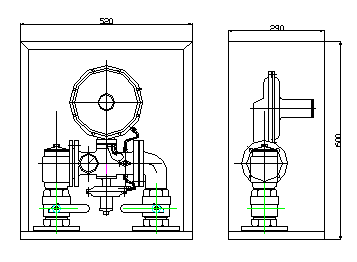
Oct . 13, 2024 16:40
Back to list
LNG Equipment and Technology for Efficient Gas Conversion Systems
An Overview of Gasification Equipment Technologies and Applications
Gasification is a thermochemical process that converts organic or fossil-based materials into carbon monoxide, hydrogen, and carbon dioxide. The process occurs at high temperatures with a controlled amount of oxygen or steam. As global energy demands continue to rise, gasification equipment has gained significant attention due to its potential for converting various feedstocks, including coal, biomass, and waste, into valuable energy products. This article will explore the types of gasification equipment, their functionalities, and various applications.
Types of Gasification Equipment
Gasification systems are broadly classified into several categories based on the technology and feedstock used. The most common types include
1. Fixed Bed Gasifiers This type operates with a stationary bed of feedstock. Feedstock is introduced from the top, and gasifying agents (air, steam, or oxygen) are injected from below. Fixed bed gasifiers are typically used for biomass and are known for their simplicity and low operating costs.
2. Fluidized Bed Gasifiers In this design, the feedstock is suspended in a bed of hot, inert particles. The gasifying agent is passed through the bed at a velocity sufficient to keep the particles in motion. This type is versatile, suitable for varying feedstock types, and offers better temperature and reaction control, leading to higher efficiency.
3. Entrained Flow Gasifiers Feedstock is converted into gas in a reaction chamber where it is mixed with a gasifying agent and subjected to high temperatures and pressures. This type is particularly suitable for coal and has a higher throughput compared to fixed and fluidized bed systems, which makes it ideal for large-scale operations.
4. Plasma Gasifiers Utilizing high temperatures generated by plasma arcs, this technology can break down complex organic materials, including hazardous waste, into syngas and other byproducts. Plasma gasification represents a cutting-edge method with significant environmental benefits.
Functionality of Gasification Equipment
.
- Feedstock Handling Systems These systems prepare and process the raw materials before introduction into the gasifier. They may include shredders, dryers, and conveyors that ensure the feedstock is in the optimal size and moisture content.
معدات التغويز

- Gasifier Reactor The core component where the gasification reactions occur. It must maintain high temperatures and a controlled atmosphere to facilitate gas production while minimizing tar and other undesired byproducts.
- Cooling and Cleanup Systems After gasification, the produced syngas often contains impurities such as tar, particulate matter, and acids. Cooling systems reduce the gas temperature, while cleanup technologies remove contaminants to ensure the syngas is suitable for further use.
- Energy Recovery and Conversion Systems The cleaned syngas can be utilized to produce electricity or converted into chemicals and fuels. Technologies such as Combined Cycle Gas Turbines (CCGT) or Fischer-Tropsch synthesis are often employed in these systems.
Applications of Gasification Technology
Gasification technology has numerous applications across various industries
- Electricity Generation Gasification can serve as a reliable source for producing electricity. By converting solid fuels like coal and biomass into syngas, power plants can generate electricity with lower emissions compared to traditional combustion processes.
- Fuel Production The syngas produced can be further converted into synthetic natural gas (SNG), methanol, or even liquid fuels such as diesel through established chemical processes.
- Waste Management Gasification offers a sustainable method for managing and treating municipal solid waste and industrial waste. Converting waste into energy reduces landfill use and associated greenhouse gas emissions.
- Chemical Feedstocks The syngas can be utilized to produce a variety of chemicals that serve as building blocks for various industrial applications, thus providing an alternative to conventional fossil resources.
Conclusion
With the increasing emphasis on sustainable energy and waste management solutions, gasification equipment offers a promising pathway for utilizing multiple feedstocks, yielding clean energy, and reducing environmental impact. Continued advancements in gasification technology will contribute to the development of more efficient systems, fostering a circular economy and a cleaner future. As industries seek to diversify their energy sources and reduce their carbon footprints, gasification stands out as a viable technology worth investing in.
Next:
Latest news
-
Safety Valve Spring-Loaded Design Overpressure ProtectionNewsJul.25,2025
-
Precision Voltage Regulator AC5 Accuracy Grade PerformanceNewsJul.25,2025
-
Natural Gas Pressure Regulating Skid Industrial Pipeline ApplicationsNewsJul.25,2025
-
Natural Gas Filter Stainless Steel Mesh Element DesignNewsJul.25,2025
-
Gas Pressure Regulator Valve Direct-Acting Spring-Loaded DesignNewsJul.25,2025
-
Decompression Equipment Multi-Stage Heat Exchange System DesignNewsJul.25,2025

